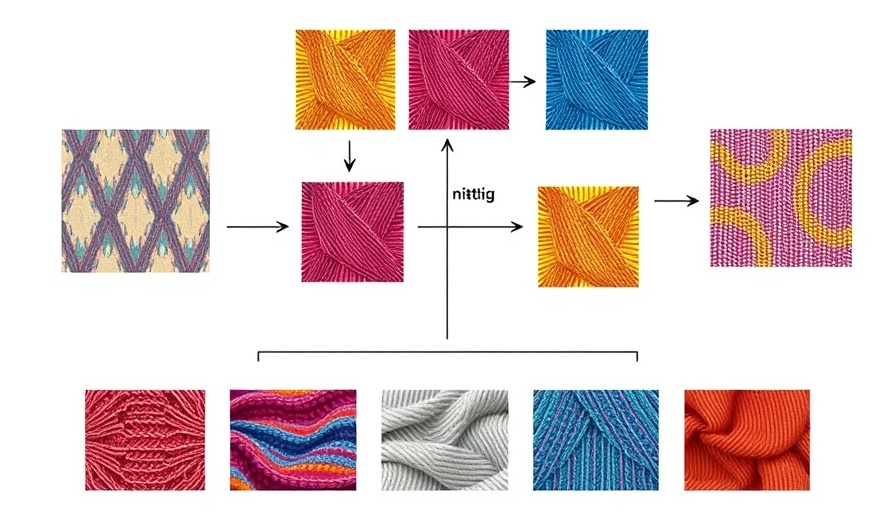
Transforming Fabrics into Digital Instructions: The Revolution in Knitting
In a groundbreaking development in textile manufacturing, researchers at Laurentian University have leveraged the power of artificial intelligence (AI) and machine learning to automate the knitting process fully. Traditionally, the production of knitted garments involved intricate manual processes, especially in creating knitting instructions from fabric images. This new initiative presents an innovative solution by converting fabric images into comprehensive machine-readable knitting instructions, paving the way for a significant transformation in how clothes are produced and personalized.
The Mechanics Behind the Automation
The model developed by the researchers operates through a two-phase process: generation and inference. In the generation phase, the AI processes actual fabric images, generating clear synthetic representations which are then interpreted to produce simplified knitting instructions known as front labels. The inference phase follows, where the model uses these front labels to create detailed knitting instructions ready for robotic execution.
Why Does This Matter?
The task of manual labeling in traditional methods can be labor-intensive and hinders scalability within the clothing industry. By automating this process, the researchers aim to increase efficiency and customization possibilities. This innovation addresses a pressing gap, reinforcing the potential of AI in revolutionizing manufacturing processes across various sectors.
A Glimpse into the Future of Textile Manufacturing
The implications of these advancements could be profound, not just for the knitting industry but also for broader textile manufacturing. Imagine a future where consumers can upload their desired fabric imagery, and AI seamlessly transforms that into a unique piece of clothing—a testament to personalization on a grander scale. Such capabilities could alter consumer purchasing behaviors and drive demand for bespoke fashion.
Counterarguments and Considerations
While the benefits of automation in clothing manufacture are significant, it is essential to consider potential challenges—especially regarding job displacement in traditional textile roles. Moreover, the ethical ramifications of automation in the workforce and how it might affect labor markets cannot be ignored. Striking a balance between innovation and social responsibility will be crucial as we move forward.
Conclusion: The Path Ahead for AI in Fashion
As we reflect on this exciting advancement in the use of machine learning and AI within the textile industry, one must consider how these technologies will continue to influence not just manufacturing but our societal standards for customization and consumer engagement. It opens doors to new opportunities while prompting necessary discussions on the ethics of such transformations. Understanding these developments will help us navigate the future potential of AI in our daily lives and industries.
 Add Row
Add Row  Add
Add 




Write A Comment